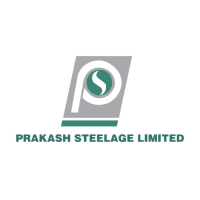Duty Drawback Scheme
GET EXPERT CONSULTATION
Duty Drawback Scheme - Eligibility, Rates & Procedure
The Duty Drawback scheme was introduced as a rebate to exporters on the cost that is incurred during the exporting process. The scheme provides a cashback to the exporters for certain raw materials and service tax used in manufacturing export goods and there are certain goods that are eligible for duty drawbacks.
This article aims to let you know how you can use this scheme at your disposal and take benefits from the scheme.
Table of Content
- What is Duty Drawback Scheme?
- Documents required for claiming duty drawback process
- Components of duty drawback?
- Advantages and disadvantages of Duty drawback
- Goods eligible for Duty Drawback scheme
- Eligibility Criteria for Duty Drawback Scheme
- What are Duty Drawback Rates?
- Procedure for Claiming Duty Drawback
- Conclusion
- Frequently Asked Questions (FAQs)

What is Drawback Scheme?
The duty drawback scheme is made for exporters to get a refund on customs duties paid by them on imported products that are used or incorporated in other products for export, and remain unused since their import.
The provisions for this scheme are mentioned under sections 74 and 75 under the Customs Act, 1962. According to the above sections, there are some conditions that must be met to claim duty drawback:
• Exporters can receive 98 percent of the duty paid if the imported goods are re-exported within two years of the date of importation duty was paid.
To claim duty drawback, remember the following:
• Products that are exported must be different from the inputs: The exported products must be distinguishable from the original inputs used in their production.
• Imported goods that have had their taxes and customs paid are referred to as inputs: These are the goods that have cleared customs and are ready to be used in the production of other products.
• The products that were used to create goods must undergo a physical change: The inputs used in the production process must undergo a transformation to become part of the final exported product.
• The number of inputs used per piece in the processing of export products should not be constant: The inputs required for processing may vary depending on the specific product being manufactured.
The rate of drawback (for different types of goods) to be paid per unit of the final product at the time of export is fixed by the government. This rate is determined by the degree of verification of the manufacturing process, raw materials utilized, amount of duty paid on inputs, and standards followed in producing the finished product.
If these conditions are applied duty drawback might not be allowed, which are:
• Products that are exported have less value than those that are imported: Exported products typically have a lower value compared to the goods that are imported.
• The government will consider a drawback if the exporter fails to receive the sale of the finished products within the allotted time: If the exporter does not complete the sale within the specified time frame, the government may offer a drawback on duties or taxes paid.
Documents required for claiming duty drawback process
To claim the duty drawback, an exporter needs to have some documents in their possession, which are:
• Import invoice
• Proof of payment of duty during importing
• Bill of lading copy
• Bank-certified invoices copy
• Invoice for export
• Shipping bill copy
• Bill of entry copy
• Shipping insurance (if any)
• Letterhead showing the drawback amount claimed
• Quality test report/inspection report of goods
Components of duty drawback?
Filing of duty drawback on export goods can be done online as per two methods, i.e. All Industry Rate and Brand Rate. The electronic shipping bill itself can be used to claim a duty drawback for exports done with the bill. Whereas, in the case of exports without electronic bills, a copy of the bill can be used for claiming the duty drawback, but the claim must be accompanied by the documents mentioned as per the Drawback Rules 1995. The claim may be suspended if the documents are not provided. Anyway, the export shipment will not be stopped.
All Industry Rate- An average drawback rate (AIR) decided by the government, AIR is calculated as a percent of the Freight on board (FOB) value of export products. The freight on board value is the final value of export products after adding all the costs incurred during shipment, like domestic transportation costs, handling fees, brokerage fees, storage costs, service charges, etc.
Brand Rate- If some products do not have any AIR fixed by the government, then the duty drawback is decided by the brand rate method. They grant duty drawback as per Rules 6 and 7 of the Drawback Rules,1995. Once the duty drawback claim is decided, it can be done through the Electronic Data Interchange (EDI) system, which facilitates crediting the drawback directly into the bank account of exporters.
Advantages and disadvantages of the Duty Drawback scheme
Advantages
The duty drawback scheme helps exporters claim refunds and saves costs incurred to produce the final export goods. If a company has never filed a drawback in the past three years, they can claim the whole refund together.
Disadvantages
Claiming drawbacks are a bit complex and demand a record-keeping process.
This can be simplified and exporters can claim refunds easily with the support of a service provider with expertise.
Goods eligible for Duty Drawback scheme
The eligible goods enabled by the central government are:
• Import of exported goods into India.
• Import of used exported goods into India.
• Export of goods made from indigenous materials.
• Export of goods made from imported materials.
• Export of goods made from a combination of imported or indigenous materials.
Eligibility Criteria for Duty Drawback Scheme
The eligible goods enabled by the central government are:
• The individual must be the legal owner of the goods during exportation.
• The individual must pay a customs duty on imported goods.
• Duty Drawback is applied to most goods that carry a customs duty paid on importation and the one exported.
What are Duty Drawback Rates?
The following are the Duty Drawback Rates provided by the Central government. This is a thorough rate chart of the percentage drawback. Exporters should note that the period mentioned refers to the difference between the clearance date and the date of placement in customs control before export.
Time Period
Less than 3 months
More than 3 months but less than 6 months
6 to 9 months
9 to 12 months
12 months to 15 months
15 months to 18 months
More than 18 months
Time Period
95%
85%
75%
70%
65%
60%
N/A
Procedure for Claiming Duty Drawback
The following steps show how the exporter can take advantage of the duty drawback scheme:
Step 1: Filling the Shipping Bill
Exporters must fill all essentials in a prescribed shipping bill format under the duty drawback scheme.
Step 2: Automatic Claim
There is no need for a separate application during the digital document process.
Step 3: Separate Application for Manual Exports
Manual exports require a separate application in order to claim duty drawbacks.
Step 4: Adhering to drawback Rules
The exporter should apply for a claim process in conformity with the policies under the Drawback Rule 1995.
Conclusion
In conclusion, the duty drawback scheme provides a refund of customs and central excise duties paid on imported materials used for manufacturing export-oriented products. This scheme is developed to promote the growth of the export industry. Claiming duty drawbacks reduces the working capital costs and improves their competitiveness globally for the exporters. This scheme covers a significant number of export items and has exceptions and procedures to make sure that it is implemented effectively.
Why Professional Utilities?
At Professional Utilities, we leverage our industry knowledge and expertise to help businesses navigate complex regulations, minimize risks, and optimize operations for maximum efficiency and profitability.
- One Stop Corporate Solution
- Free Expert Assistance
- PAN India Services
- Google Verified Business
- Dedicated Support Staff
- Money-Back Guarantee
TRUSTED BY |






Frequently Asked Questions (FAQs)
Duty drawback provides refunds of customs duties and taxes paid during the importing of goods, which are further used for manufacturing products that are exported.
The time limit for filing the claim is three months from the date of let export order.
Under this, the goods imported earlier may be exported, and a duty drawback of up to 98% of the import duty paid can be claimed on such exports.
The scheme has three categories-
• All Industry Rate
• Brand Rate
• Drawback on re-export of imported goods
